What is Tamil desiyam?
Language is the most important finding of Human being, that has made us think and share our knowledge with others. While all the species in the world communicate only through sound; humans have language through which they can communicate their entire thoughts through verbal form or writings and also easily convey their history to the next generations and so on.
There is no doubt that Tamil is the oldest language in the world, though this makes us proud; we need to be more responsible in taking this language to the next generation. Being the mother of all languages, Tamil must have the root of all our ancestors knowledge. But very little is being shown to this world. In order to know our human history, we need to study Tamil language and bring out all its hidden facts. One of the interesting fact about Tamil language is - Cash word origin was from pure Tamil word 'Kaasu'.
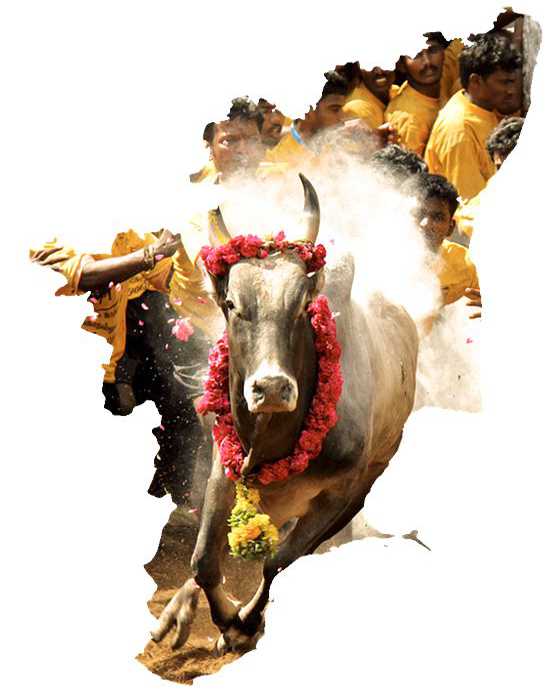
Tamil desiyam is a responsible digital platform in bringing out the in-depth hidden knowledge of Tamil language, Tamil history; and sharing it to all the people in India & across the Globe. This will help people learn World history from the first language in the world. This platform will share research work with evidence conducted by researchers like Ma So Victor, Mannar Mannan and Tamil desiyam views by Tamil nationalist like Paari Saalan.
This website Tamil desiyam offers knowledge about Tamil Language, Tamil history, Siddha medicine, Tamil books PDF, Tamil Quotes, Tamil Novels, Tamil civilization, literature, religion and culture; thereby educating Tamils living in India and across the globe, in understanding their ancestor’s way of life, that will guide them to live a fulfilled life.
Aryans and Dravidian philosophy have become fake on its own and is overcome by Tamil Desiyam as a guide for politics in Tamil Nādu, India. Tamil Desiyam has become a self-sustained ideology in multiple fields, such as - Politics, economy, ecology, human values, etc. After a long struggle Tamil Desiyam become the core value of Tamil Nadu politics.
>Tamil desiyam ideology includes freedom from caste discrimination, woman Liberation, environmental protection. Tamil Desiyam unites all the social activists in one point. The various aspects and detailed research work of Tamil Desiyam are given below
Tamil Desiyam is the foundation of the philosophy of Tamil virtue. All dominant ideology uses India as its container. on the other side, Tamil Nadu for liberation ideologies, the container is the Tamil language itself!
Tamil Desiyam is not only a political liberation, it includes - Behaviourism, Sociology, Economics, Morality, System, Equality in all aspects of ecology. Tamil as its inherent ideology, is presented by Tamil Desiyam.
Lemuria and the Tamils
Tamil Desiyam researchers relate the origin of the Tamils to the submerged continent of Lemuria continent. Lemuria is also known as Kumari Kandam in Tamil Nadu. This theory of Lemuria continent was proposed in the 19th century.
In the wake of advancements in plate tectonics theory, differing views are put forth by scholars. The available literary references point to the submergence of areas around Kanyakumari. Some parts of Sri Lanka and Tamil Nadu were connected by land about 5000 years BCE.
It is possible that some land might have submerged near Kanyakumari and around the coast of India, because of the rising sea levels. Underwater surveys are necessary in this area.
Archaeological research reveals that at least a section of people may have been living continuously in South India, including Tamil Nadu, from the Mesolithic and Neolithic times.
Tamil Civilisation and Indus valley civilization
The similarity of the graffiti found on the megalithic burial pots of South India with the Indus script and the identical place names of Tamil Nadu and Indus region of Pakistan are presented as arguments to establish the relationship between the Indus valley civilisation and Tamil culture.
Tamil Desiyam describes that the Researchers like Father Henry Heras, Asko Parpola and Iravatham Mahadevan find similarity between the Indus valley script and the Tamil language.
The Classical Sangam Tamil Literature
The Classical Sangam collection consists of the Tholkappiyam, the Pathinen Melkanakku (18 Major works) and the Pathinen Kilkanakku (18 minor works) and the five epics.
Tholkappiyam
According to Tamil Desiyam; Tholkappiyam written by Tholkappiyar, is the earliest written work on Tamil grammar. Apart from elaborating the rules of grammar, the third section of Tholkappiyam also describes poetic conventions that provide information on Tamil social life and siddha medicine.
The texts of Pathinen Melkanakku include Pathupaattu (ten long songs) and Ettuthogai (the eight anthologies).
These texts are the oldest among the classical Tamil texts. The texts of Pathinen Kilkanakku belong to a later date.
The Ettuthogai or the eight anthologies are
1. Nattrinai
2. Kurunthogai
3. Paripaadal
4. Pathittrupathu
5. Aingurunuru
6. Kalithogai
7. Akanaanuru
8. Puranaanuru
Pathupattu collection includes ten long songs
1. Thirumurugatrupadai
2. Porunaratrupadai
3. Perumpanatruppadai
4. Sirupanatrupadai
5. Mullaipaattu
6. Nedunalvaadai
7. Maduraikanchi
8. Kurinjipaattu
9. Pattinappaalai
10. Malaipadukadam
Pathinen Kilkanakku - 18 minor works: The Pathinen Kilkanakku comprises eighteen texts elaborating on ethics and morals. Tamil Desiyam defines that the pre-eminent work among Pathinen Kilkanakku is the Thirukkural composed by Thiruvalluvar. In 1330 couplets Thirukkural considers questions of morality, statecraft and love.
Tamil Brahmi
Tamil Brahmi was the first script used for writing in Tamil Nadu. Inscriptions in Tamil-Brahmi are found in caves and rock shelters, and on pottery and other objects (Coins, rings and seals).
Tamil Desiyam defines that Tamil-Brahmi inscriptions have been found in more than 30 sites in Tamil Nadu mostly on cave surfaces and rock shelters. These caves were the abodes of monks, mostly Jaina monks. The natural caves were converted into residence by cutting a dripline to keep rain water away from the cave. Inscriptions often occur below such driplines.
The sites have smooth stone beds carved on rock surface for monks who led a simple life and lived in these shelters. Merchants and kings converted these natural formations as habitation for monks, who had renounced worldly life.
Mangulam, Muttupatti, Pugalur, Arachalur and Kongarpuliyankulam and Jambai are some of the major sites of such caves with Tamil-Brahmi inscriptions. Tamil Desiyam conforms that; around Madurai many such caves with Tamil-Brahmi inscriptions can still be seen. Many of them are located along ancient trade routes.
Tamil Archaeological Sites
Tamil Desiyam supported the Archaeological excavations at the early historic sites are the source of evidence of the activities of the Sangam Age people. Excavations at Arikkamedu, Azhagankulam, Uraiyur, Kanchipuram, Kaveripoompattinam, Korkai, Vasavasamudram, Keezhadi, Kodumanal in Tamil Nadu, and Pattanam in Kerala provide the evidence we have of this period.
Arikkamedu, near Puducherry, is a Sangam Age port, excavated by the Archaeological Survey of India (ASI). British archaeologist, Robert Eric Mortimer Wheeler, French Archaeologist,J.M. Casal, and Indian archaeologists, A. Ghosh and Krishna Deva, excavated this site. They found evidence of a planned town, warehouse, streets, tanks and ring wells.
Coins Used by Tamils
Coins as a medium of exchange were introduced for the first time in the Sangam Age. The coins of the Cheras, the Cholas and the Pandyas, punch-marked coins, and Roman coins form another important source of evidence from the Sangam Age. Punch-marked coins have been found at Kodumanal and Bodinayakkanur. Roman coins are concentrated in the Coimbatore region, and are found at Azhagankulam, Karur, and Madurai. They were used as bullion for their metal value and as ornaments.
The Tamil Sangam Age
The Tamil Sangam Age or the Early Historic period is an important phase in the history of Tamil Nadu. This period is marked out from prehistory, because of the availability of textual sources, namely Sangam literature and Tamil-Brahmi inscriptions.
Sangam text is a vast corpus of Tamil Desiyam literature that serves as an important source for the study of the people and society of the relevant period.
The Sangam texts are generally dated to between third century BCE and the third century CE. The references in Greco-Roman texts, Tamil- Brahmi inscriptions and the references to the Cheras, Cholas and the Pandyas in the Ashokan inscription corroborate this date. Tamil Desiyam agreed that the Sangam poems were composed in the early part of the historical period, but were compiled into anthologies in the later period. Ashokan Brahmi - the script used in Ashokan edicts or inscriptions.
Tamil Desiyam Politics
The Sangam Age has its roots in the Iron Age. In the Iron Age people were organised into chiefdoms. From such communities of Iron Age emerged the Vendhars of the early historic period and the Velirs of the Sangam Age were chieftains.
The Mauryan emperor, Asoka, conquered Kalinga (Odisha) and parts of Andhra and Karnataka regions. Ashokan inscriptions found in present day Odisha, Karnataka, Telangana and Andhra Pradesh are not seen in Tamil Nadu and Kerala.
Therefore, we may conclude that the Tamil Desiyam Political rulers were independent of Mauryan authority. The Muvendhar among the political powers of the Sangam Age, the Cheras, the Cholas and the Pandyas occupied pre-eminent positions. They were known as Muvendhar (the three kings). Th e muvendhar controlled the major towns and ports of the Sangam period.
The Cheras, referred to as Keralaputras in the Ashokan inscriptions, controlled the region of present-day Kerala and also the western parts of Tamil Nadu. Vanci was the capital of the Cheras while Muciri and Thondi were their port towns. Vanci is identified with Karur in Tamil Nadu while some others identify it with Thiruvanchaikkalam in Kerala.
Pathirtruppathu speaks about the Chera kings and their territory. The Cheras wore garlands made from the flowers of the palm tree. The inscriptions of Pugalur near Karur mention the Chera kings of three generations. Coins of Chera kings have been found in Karur.
The Silappathikaram speaks about Cheran Senguttuvan, who built a temple for Kannagi, the protagonist of the epic. The bow and arrow were the symbol of the Cheras. Legend has it that Ilango who composed the Silappathikaram, was the brother of Cheran Senguttuvan.
The Chola ruled over the Kaveri delta and northern parts of Tamil Nadu. Their capital was Uraiyur and their port town was Kaveripoompattinam or Pumpuhar, where the river Kaveri drains into the Bay A Chera coin with bow and arrow, and an elephant goad on the obverse and elephant on the reverse Chola Coins with a tiger on the obverse, elephant and the sacred symbols on the reverse Sangam Age Pandya coin with fish symbol
Tamil Desiyam on Economy of Tamils
The economy of Tamils was mixed as elaborated in the Thinai concept. According to Tamil desiyam; People practiced agriculture, pastoralism, trade and money exchange, hunting-gathering, and fishing depending upon the eco-zones in which they lived.
Agriculture was one of the main sources of subsistence. Crops like paddy, sugarcane, millets were cultivated. Both wet and dry land farming were practiced. In the riverine and tank-irrigated areas, paddy was cultivated.
Millets were cultivated in dry lands. Varieties of rice such as sennel (red rice), vennel (white rice), and aivananel (a type of rice) are mentioned in the literature. Rice grains were found in burial urns at excavations in Adichanallur and Porunthal. People in the forest adopted punam or shifting cultivation.
Tamil country and Overseas Interactions
Tamil country had connections with countries overseas both in the east and west. Roman ships used monsoon winds to cross the Western Sea or the Arabian Sea to connect Tamil nadu with the Western world. Spices including pepper, ivory, and precious stones were exported. Metal including gold, silver and copper and precious stones were imported.
Textile production was another important occupation. Evidence of spindle whorls and pieces of cloth have been found at Kodumanal. Literature too refers to clothes called kalingam and other fine varieties of textiles. Periplus also mentions the fi ne variety of textiles produced in the Tamil region. Spindle whorls were used for making thread from cotton.
We saw the primary production of grains, cattle wealth, and various commodities. These goods were not produced by everybody and were not produced in all settlements. Resources and commodities were not available in all regions. For example, the hill region did not have fish or salt and the coastal regions could not produce paddy. Therefore, trade and exchange were important for people to have access to different commodities.
Tamil Desiyam Specialised groups called vanikars (traders) travelled in groups trading goods and commodities between regions. The terms vanikan and nigama (guild) appear in Tamil-Brahmi inscriptions. There were different types of merchants: gold merchants, cloth merchants, and salt merchants. Salt merchants were called Umanars and they travelled in bullock carts along with their family.
Bullock carts and animals were used to transport goods by land. Trade routes linked the various towns of Tamilagam. Various types of water craft s and sea-going vessels such as Akanaanuru poem 149 describes the trading at the port of Muciri as follows:
“the well-crafted ships of the Yavana came with gold returned with pepper at the wealthy port of Muciri” The trade route from Tamil Nadu to Rome.
Siddha Medicine
Siddha Medicine is a Tamil traditional medical system providing - preventive, promotive, curative, rejuvenate and rehabilitative health care by adopting scientific and holistic approach. The word ‘Siddha’ is derived from the root Tamil word ‘Citti’ meaning attainment of perfection, eternal bliss and accomplishment. Siddha medicine has strong roots reflecting the culture, tradition and heritage of India.
Ponniyin Selvan pdf
Ponniyin Selvan pdf is a Tamil novel of Kalki Krishnamurthy, English Translation done by Indra Neelameggham part I A (chapters 1 to 30). Ponniyin Selvan means "Beloved of the Ponni". Ponni is the ancient Tamil name for River Kaveri. Prince Arulmozli Varma was popularly known as "Ponniyin Selvan" or "Beloved of the Cauvery".
Mannar mannan
Mannar mannan is a Tamil history researcher, media person, writer, numismatist, founder of Payitru Educational trust, Payitru Padaippagam youtuber and owns a sizable collection of approximately 5000 coins, stamps and antiques. His collection is substantial enough to allow us to explore Tamil Nadu's past as well as the history of India as a whole.
Tamil Books
There are numerous Tamil books PDF that describes the Tamil Language, civilization, culture, politics, people and History. Many such books explains Tamil desiyam in detail. Author Mannar mannan has written 8 books about Tamil history through his research, you can buy Mannar mannan books here.
Tamil Novels
There are many authors who write Novels in Tamil. Tamil Novels constitute to the highest book sales in Tamil language. All Novels in Tamil free download are available in Tamil desiyam portal.
The famous novels in Tamil, literature and research books are listed below
Tamil Quotes
Tamil desiyam provides the latest collection About Life quotes in Tamil for free, that can motivate you during difficult times and encourage you to become successful in life. we also offer the best motivational quotes in Tamil and life quotes in Tamil. You can also find Tamil desiyam quotes by Seeman here.
தமிழ் நூல்கள் - Tamil Books
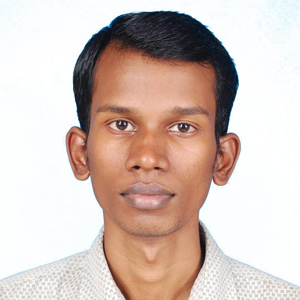 Mannar Mannan Books
Mannar Mannan Books
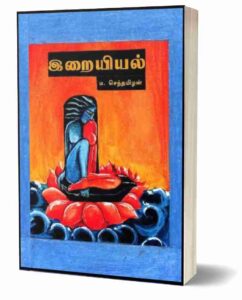 Iraiyiyal இறையியல்
Iraiyiyal இறையியல்
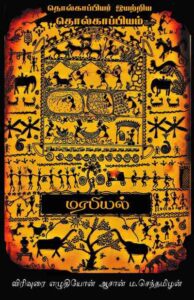 தொல்காப்பியம் மரபியல் Tholkappiyam Marabiyal
தொல்காப்பியம் மரபியல் Tholkappiyam Marabiyal
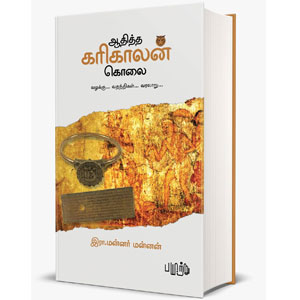 Aditya Karikalan Death |ஆதித்த கரிகாலன்...
Aditya Karikalan Death |ஆதித்த கரிகாலன்...
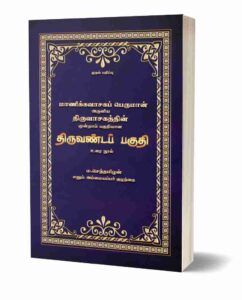 Thiruvasagam Thiruvandapaguthi திருவாசகம் திருவண்டப் பகுதி
Thiruvasagam Thiruvandapaguthi திருவாசகம் திருவண்டப் பகுதி
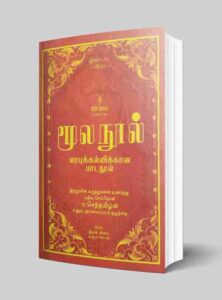 Moolanool மூல நூல் மரபுக் கல்விக்கான...
Moolanool மூல நூல் மரபுக் கல்விக்கான...
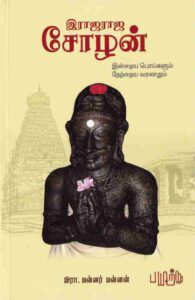 Rajaraja Cholan இராஜராஜ சோழன்
Rajaraja Cholan இராஜராஜ சோழன்
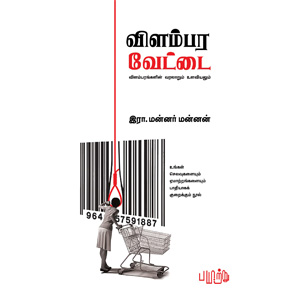 Vilambara Vettai | விளம்பர வேட்டை
Vilambara Vettai | விளம்பர வேட்டை
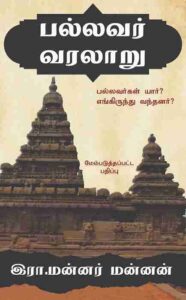 Pallavar Varalaru பல்லவர் வரலாறு
Pallavar Varalaru பல்லவர் வரலாறு
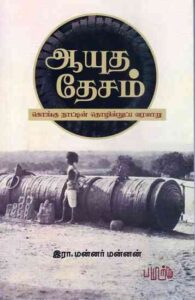 ஆயுத தேசம்: கொங்கு நாட்டின் தொழில்நுட்ப...
ஆயுத தேசம்: கொங்கு நாட்டின் தொழில்நுட்ப...
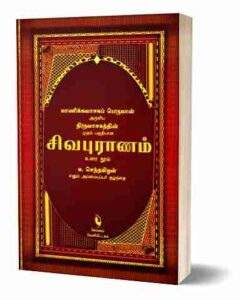 Sivapuranam Thiruvasagam சிவபுராணம் திருவாசகம்
Sivapuranam Thiruvasagam சிவபுராணம் திருவாசகம்
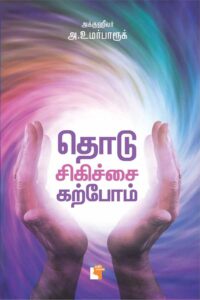 தொடுசிகிச்சை கற்போம் Acupuncture books
தொடுசிகிச்சை கற்போம் Acupuncture books
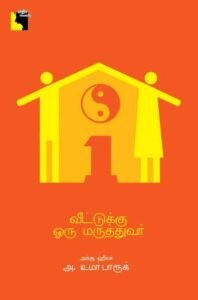 வீட்டுக்கு ஒரு மருத்துவர் Acupuncture book...
வீட்டுக்கு ஒரு மருத்துவர் Acupuncture book...
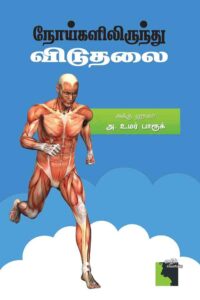 நோய்களிலிருந்து விடுதலை Freedom from disease...
நோய்களிலிருந்து விடுதலை Freedom from disease...
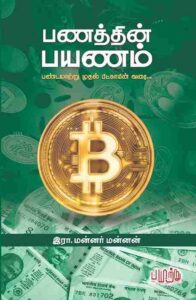 Panathin Payanam பணத்தின் பயணம்
Panathin Payanam பணத்தின் பயணம்
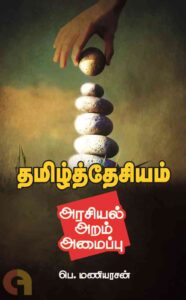 தமிழ்த்தேசியம் – அரசியல் அறம் அமைப்பு...
தமிழ்த்தேசியம் – அரசியல் அறம் அமைப்பு...
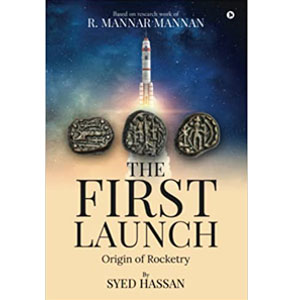 The First Launch
The First Launch
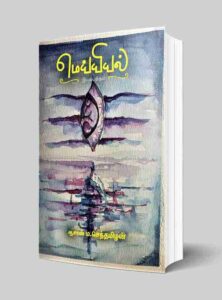 Meyiyal மெய்யியல்
Meyiyal மெய்யியல்
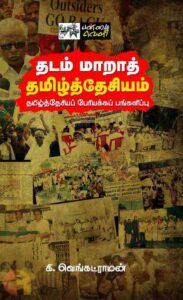 தடம் மாறாத் தமிழ்த்தேசியம் Tamil desiyam
தடம் மாறாத் தமிழ்த்தேசியம் Tamil desiyam
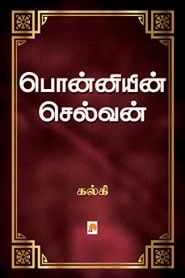 Ponniyin Selvan Novel
Ponniyin Selvan Novel
Find more details about National bird of India here.
Read privacy policy and terms of service of Tamil desiyam here.